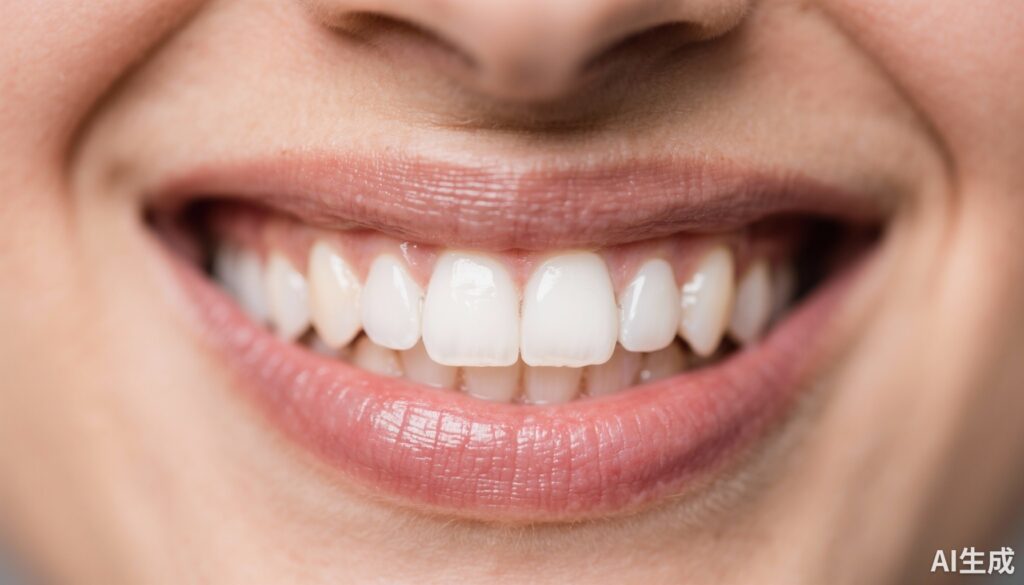**Patient Information**
A patient presenting with concerns related to esthetics, specifically seeking improvement in the appearance of the anterior maxillary teeth. The patient’s age, gender, and relevant dental history are not specified but are typically middle-aged with a desire for conservative, long-lasting esthetic solutions. The patient’s chief complaints involved dissatisfaction with existing tooth alignment and spacing, notably diastemas between the upper front teeth. The patient’s oral health was generally good, with no significant periodontal or systemic conditions impacting treatment options.
**Diagnosis**
The clinical examination revealed anterior maxillary teeth with diastemas and morphological discrepancies affecting smile harmony. No significant carious lesions or structural damages were observed. Diagnostic records, including impressions, photographs, and a mock-up, confirmed the need for esthetic correction focused on closing diastemas and harmonizing tooth shape and size. The confirmed diagnosis was esthetic dental discrepancy mainly involving maxillary anterior teeth, suitable for conservative ceramic laminate veneers.
**Differential Diagnosis**
Other potential conditions considered included peg-shaped teeth, small tooth size, and developmental anomalies, but clinical and diagnostic assessments supported the diagnosis of spacing and morphological esthetic issues primarily addressed through veneers. Orthodontic treatment may have been an alternative in some cases but was not the chosen approach due to patient preference for minimally invasive procedures.
**Treatment and Management**
A comprehensive clinical assessment was performed, including anamnesis, intraoral examination, dental impressions, and a diagnostic mock-up to visualize the final outcome. The treatment plan involved the fabrication of ultra-thin feldspathic ceramic laminate veneers. Tooth preparations were minimally invasive, limited to the enamel, to preserve tooth structure and enhance the bonding interface’s durability.
The veneer fabrication involved detailed block-specific layering to optimize optical properties, taking advantage of the high translucency and aesthetic qualities of feldspathic porcelain. Bonding procedures adhered to strict adhesive protocols, ensuring a durable adhesion between the ceramic and enamel.
**Outcome and Prognosis**
Post-procedural results demonstrated excellent esthetic integration, with closed diastemas and improved tooth morphology, matching natural teeth. The patient was satisfied with the functional and aesthetic outcomes. Over a follow-up period exceeding 12 years, the veneers have remained stable, with no reported issues such as fractures, debonding, or discoloration, indicating a highly durable and successful treatment.
**Discussion**
This case emphasizes the importance of meticulous planning, material selection, and technique execution in conservative esthetic dentistry. Feldspathic ceramic veneers offer exceptional optical properties, making them highly suitable for highly esthetic anterior restorations. Their minimally invasive nature preserves enamel, enhancing bonding strength and longevity.
Long-term follow-up evidences that with appropriate case selection and careful execution, feldspathic ceramic veneers can provide durable, aesthetic, and functional outcomes over a decade. This reinforces current trends favoring conservative approaches and high-quality materials in esthetic rehabilitation.
The case also illustrates the value of comprehensive diagnostic procedures, including mock-ups, to ensure predictable results and patient satisfaction. It highlights the evolution of ceramic materials and adhesive techniques that enable minimal preparation without compromising longevity.
**References**
Reis JMDSN, Pansani TN, Del’Acqua MA, Abi-Rached FO. Minimally Invasive Ceramic Laminate Veneers for Maxillary Anterior Esthetic Rehabilitation: A 12+ Years Follow-Up. J Esthet Restor Dent. 2025 Oct;37(10):2171-2179. doi: 10.1111/jerd.70001. Epub 2025 Jul 13. PMID: 40653452; PMCID: PMC12457873.



